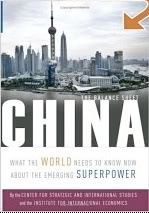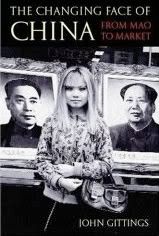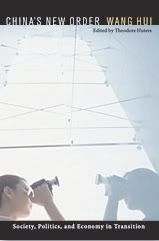China's appetite for meat feeds a Brazilian soybean boom
By Alexei Barrionuevo
Published: April 5, 2007
RONDONÓPOLIS, Brazil: For more than 2,000 years the Chinese have turned soybeans into tofu, a staple of the country's diet. But as its economy grows, so does the Chinese appetite for pork, poultry and beef, which require higher volumes of soybeans as animal feed.
Beset by scarce water supplies, China is turning to a trading partner 24,000 kilometers, or 15,000 miles, away - Brazil - to supply the protein-packed beans essential to create a meat-rich diet.
The Chinese scramble for natural resources is leading to a transformation of the world's grain trading. Vanishing cropland and diminishing water supplies are hampering the ability of China to feed itself, and the increasing U.S. use of farmland to produce biofuels like ethanol is pushing China to seek more of its agricultural staples from South America, where land is still inexpensive and plentiful.
"China is out there beating the bushes," said Robert Thompson, a professor at the University of Illinois who is a former director for agricultural and rural development at the World Bank. The goal is "to ensure they have access to long-term contracts for minerals and energy and food."
The link between Brazil and China is a profound shift in world agricultural trade. The biggest bilateral food trade once flowed between the United States, the world's largest food exporter, and Japan. But countries with vast arable land for expansion, particularly Brazil, are now racing to meet demand in China.
American farmers have started to move away from soybeans, planting far more corn for ethanol at the expense of other crops. But long after watching a U.S. soybean export embargo imposed by President Richard Nixon in the early 1970s help to spawn the Brazilian soybean industry, they are not giving up their leading role in the trade easily.
With a superior system for transporting grains to global markets, American farmers still enjoy many advantages over their competitors from Brazil and elsewhere in the developing world. Infrastructure and financing constraints in Brazil will keep the global competition to feed China in flux for years to come.
But the longer-run trends are emerging. At the heart of the shift is the global competition for land to grow crops. Brazil, which farms about 70 million hectares, or 173 million acres, has room to double its available cropland to equal the scale of the United States, analysts say, even without clearing any more of the Amazon rain forest.
"All of a sudden you have a global market for land, a competition between several different products for the same amount of land," said Sérgio Barroso, president of the Brazil operations of Cargill, the world's biggest grain trader.
The Brazilian soybean industry is already losing hectares to sugar cane for ethanol production in some areas, he said, and is competing with corn, cotton and cattle for the same land.
"If you put it all together, between feed and food it is going to be a tremendous challenge," Barroso said.
Expectations ran high three years ago when President Hu Jintao of China visited South America and talked of a "strategic partnership" with President Luiz Inácio Lula da Silva of Brazil, predicting trade between the two countries would double to $20 billion. China pledged $10 billion in investments, mostly in infrastructure.
Brazilians have been disappointed in the follow-up, however. China has struggled with the Brazilian paper work and has waited for Brazilian rules on public-private investments before committing large amounts of capital to infrastructure projects.
"Very little has happened," said Pedro de Camargo Neto, a former official in the Brazilian Agriculture Ministry who is now an agribusiness consultant.
Still, China has continued its buying spree in Brazil. Last year, Brazil sent nearly 11 million tons of soybeans to China, up 50 percent from the previous year and nearly double the amount shipped in 2004. Early indications are that Brazil has produced yet another record crop and analysts expect that China will take most of the increase.
While the United States remains the largest producer of soybeans, last year Brazil passed it as the world's biggest exporter. U.S. soybean exports are expected to fall by 23 percent by the 2009-2010 crop year, according to the U.S. Agriculture Department.
For all the Brazilian gains, though, the surge in exports to China has created a sense of unease among many in Brazilian agriculture, who worry the growing relationship will accelerate a development model in which Brazil is too reliant on sales of raw natural resources rather than value-added goods.
"We are a little bit nervous," said Seneri Paludo, a trade analyst at AgRural, an agricultural consultancy in Cuiabá, the heart of the Brazilian soybean country. "This is happening too fast."
In some parts of Brazil, the challenge of supplying China is already showing signs of strain. The soybean boom in the past two years has not brought rewards for many farmers in Mato Grosso state in western Brazil which produces more than a third of the country's beans.
In Rondonópolis, in Mato Grosso, Rogério Salles watched recently as a handful of combines harvested the last soybeans on his 7,000-hectare farm.
"Just because we're producing a lot of beans here doesn't mean we're making money," he said.
A higher-valued Brazilian currency and a bottlenecked transport system are working against many Mato Grosso farmers like Salles. Most soybeans are trucked south more than 1,600 kilometers along two-lane highways full of potholes. At the export ports, some ships wait at sea for up to a month before finding docking space to load the beans.
"If major investments are not made in transport infrastructure, China cannot count on this region being a stable supplier to its market," Salles said. "There's a lot riding on this."
The Brazilian agricultural sector has been dominated by large investors who bought huge tracts of land at bargain prices, and by multinational grain traders - like Cargill of Minneapolis and Archer Daniels Midland of Decatur, Illinois - that have built storage, provided financing and lined up the overseas buyers.
Through his Maggi Group, Blairo Maggi, the governor of Mato Grosso, is the largest soybean grower in the world, and a major financier, with 160,000 hectares of his own under production.
"It has been all about a land grab in Brazil," said Daniel Basse, president of AgResource, an agricultural consultant.
As for many farmers in Mato Grosso, prosperity has been hard to come by lately. Growers in the state amassed $14.5 billion in debt in the past two years. Farmers say they can no longer afford storage space for their grains, forcing them to sell their crops as soon as they are harvested, rather than wait for higher prices. "You do all the work, you plant the right crops," Salles, the local farmer, said. "But even when you do everything right, you still lose."
The growers' desperation has allowed the major grain traders to tighten their grip. Brazilian farmers say they are paying up to 25 percent more for inputs like fertilizers provided by the traders, which are paid back with the crop.
"We are becoming slaves of the big trading companies," said Ricardo Tomczyk, another farmer in Rondonópolis.
José Luiz Glaser, Cargill general manager in Brazil for grains and oilseeds, said Cargill stopped financing several farmers in Mato Grosso last year after they failed to pay their bills.
Such abandoned farmers could soon find new Chinese benefactors, who are looking to make inroads in the clubby world of Brazilian agriculture, said Charles Tang, president of the Brazil-China Chamber of Commerce.
Brazilian farmers say they would welcome Chinese money. But they worry about the growing clout of China as a soybean buyer. Memories are still fresh of an incident in 2004, when China rejected several shipments of Brazilian soybeans, saying they were contaminated.
To try to counter the Chinese influence, Brazilian producers are working with U.S. growers to diversify their buyers. American soybean producers organized a joint trade mission with Mato Grosso farmers last December to India, another huge potential market.
As for China, its dream is to connect directly with Brazilian farmers, bypassing the multinational grain merchants. While Chinese companies have yet to make a major purchase of cropland in Brazil, they are looking to invest in improved facilities and upgrade the Brazilian rail system, which has not undergone significant improvement since the 1930s.
China began looking overseas for more soybean supplies in the mid-1990s when the scope of its land and water problems became clearer. In northern China, where soybeans traditionally have been grown, water tables are dropping at a rate of one to three meters, or three to 10 feet, a year, said Wu Aimin, a researcher with the China Groundwater Information Center in Beijing.
"It takes a thousand tons of water to produce one ton of grain," said Lester Brown, president of Earth Policy Institute, an environmental research and advocacy group. "So the most efficient way to import water is in the form of grain."***
Joshua Schneyer contributed reporting. David Barboza contributed from Shanghai.
Link




0 Comments:
Post a Comment
Subscribe to Post Comments [Atom]
<< Home